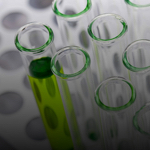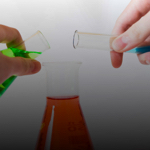Section 1
Preview this deck
animal viruses
Front
Active users
8
All-time users
9
Favorites
0
Last updated
6 years ago
Date created
Mar 14, 2020
Cards (52)
Section 1
(50 cards)
animal viruses
______ viruses can only infect _____ cells. common causes for diseases
living characteristics of viruses
can reproduce but only inside a living cell, can mutate or change, have DNA or RNA, their genome may consist of only 4 genes or up to 100 genes
antibiotic
viruses are not affected by any known
Saprophytes
live on dead organic matter, important decomposers
The Lytic Cycle
a virus enters a cell, replicates, and bursts the host cell
Nonliving characteristics of viruses
non-cellular, no metabolism, food or energy requirement, can be crystallized and dehydrated and stored indefinitely. they come to "life" only when injected inside a living cell
Virus
an infectious particle that is nonliving and uses cells to make more viruses
2 reproductive possibilities
1. some replicate and immediately killing the host cell 2. others replicate and don't destroy the host cell
tissue
viruses of Eukaryotes are usually _______ specific
RNA Viruses
flu, cold, measles, mumps, AIDS, and polio
Host
the living organism the parasite lives on
Bacteriophages
viruses that infect only certain types of bacteria
Thermoacidophiles
Live in extremely acidic and high temperature environments
prokaryotic reproduction
_________ limited by eventual exhausting of food supply, being poisoned by their own metabolic waste, competition from others microbes, being consumed by other organisms
plant viruses
______ viruses can only infect ______ cells most are RNA not DNA Injury to the ______ allows them past the epiderms insects can carry and transmit them
virulent phage
A phage that reproduces only by a lytic cycle.
steps of lytic cycle
attachment, entry, synthesis, assembly, release. ignore the left side of the pic.
reverse transcriptase
Retrovirus enzyme that transcribes their RNA template into DNA. The DNA enters the cell nucleus and integrates into the DNA of a chromosome. The retrovirus may remain dominant for some length of time, it will eventually become active causing the host cell to make new viruses and death for the host cell.
The Lysogenic Cycle
1. the host cell makes copies of the viral genetic material indefinitely 2. the virus incorporates its DNA into DNA of the cell and the viral DNA is replicated along with the host cell's DNA. Lysogenic viruses do not kill the cell right away. it may remain active for some period of time.
Human uses of bacteria
food and beverages, sour cream, yogurt and cheese. some bacteria can digest oil and are helpful cleaning up oil spills
Synthesis
The host cell is directed to produce viral genomes and protein capsids.
Vaccines
battle against viral diseases and contain harmless variations of the pathogen
Endospore
when conditions for growth become unfavorable, many bacteria form structures called... it's formed inside of a cell, contents of the cytoplasm draw up together and a thick wall is formed. can survive extreme dryness (heat or cold)
Bacteriophage T4
an example of a bacteriophage that causes a lytic infection
Prions
disease-causing forms of proteins, cause brain diseases such as Mad Cow Disease. cannot replicate
bacteriophages
be sure to label the parts. except the neck. REMEMBER the capsid is from the top down to the sheath
Bacteria
prokaryote- does not have a nucleus or membrane-bound organelles. Outweighs all eukaryotes. some are harmful and cause diseases, but most are benign or beneficial. successful bc of their rapid cell division and great metabolic diversity, they double their #'s every 20 min. and live in environments that support no other forms of life.
Prokaryotes
were placed in a single kingdom called Monera until biologists recognized great differences between 2 distinct groups of prokaryotes and should be placed into separate domains. (Archaebacteria) (Eubacteria)
Parasites
live in or on other living organisms causing them harm
virus are only active when
inside a living cell, when taken out, it ceases all activities but remains its ability to infect the cell even after long periods of time
DNA Viruses
hepatitis, herpes infections- chicken pox, shingles, cold sores, genital herpes
parasite
An organism that invades plants and animals and feeds off them Host: what the parasite is living off of
entry
phage DNA is injected. empty capsid remains outside. host cell DNA is destroyed.
Best Environment for Bacteria
temps between 80-100*, moisture, suitable food source, darkness, space to grow
Characteristics of viruses
extremely small, most can only be seen through a electron microscope
prokaryote shapes
spheres (cocci), rod shaped (bacilli), and spirals (spirillia)
Halophiles
"salt-loving" archaea that live in environments that have very high salt concentrations
Release
the cell swells, bursts, and releases of new viruses.
prokaryote movement
some are motile and others don't move at all, some move by flagella- whiplike structures, some lash or snake forward, others glide slowly over a layer of slime they secrete
Prokaryote characteristics
shape, materials composing the cell wall, the way they move, the way they obtain energy
Assembly
The viral DNA or RNA is assembled inside the protein coat.
Methanogens
unique way of getting energy. converts hydrogen gas and carbon dioxide into methane gas, thrive in the digestive tracts of cows and termites
3 archaeal groups
Methanogens, Halophiles, Thermoacidophiles
Decomposers
depend on carbon, nitrogen, and other essential elements which are recycled by bacteria, when an organism dies bacteria attacks it and breaks it down into simpler materials
attachment
tail fibers are used to attach to receptor sites on the surface of the host cell.
binary fission
type of asexual reproduction in which an organism replicates its DNA and divides in half, producing two identical daughter cells
Pathogens (bacteria)
disease causing agents in 2 ways. some damage the cells and tissues by breaking down the cells for food. others release toxins or poisons in the body of the host.
Prophage
the viral DNA that is embedded in the host cell's DNA
Retroviruses
have RNA as their genetic information instead of DNA and are responsible for some cancers, AIDS is a...
Viral Reproduction
1. they make viral parts bc they don't have enzymes or cell parts 2. infection begins when the genetic material makes its way into a host cell 3. it takes over the cell and makes the cell produce viral parts 4. the cell produces viral DNA and protein capsids and assembles the parts into viruses and makes 100s or 1000s of them. 5. most of the time the host cell is destroyed and viruses infect other cells spreading the infection.
Section 2
(2 cards)



